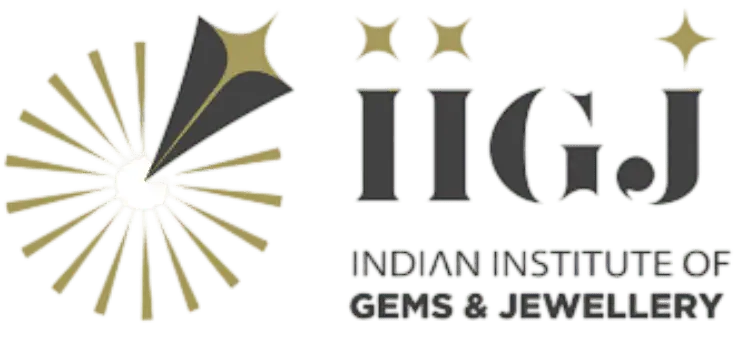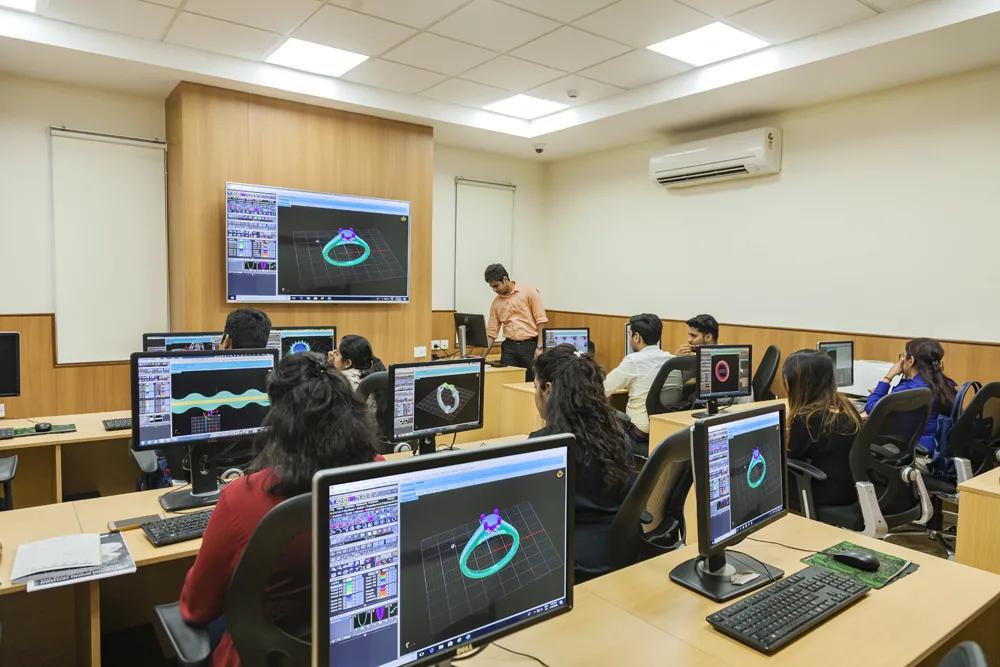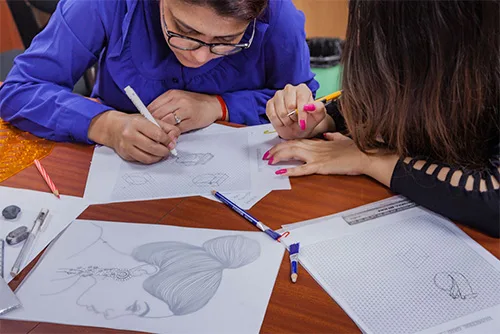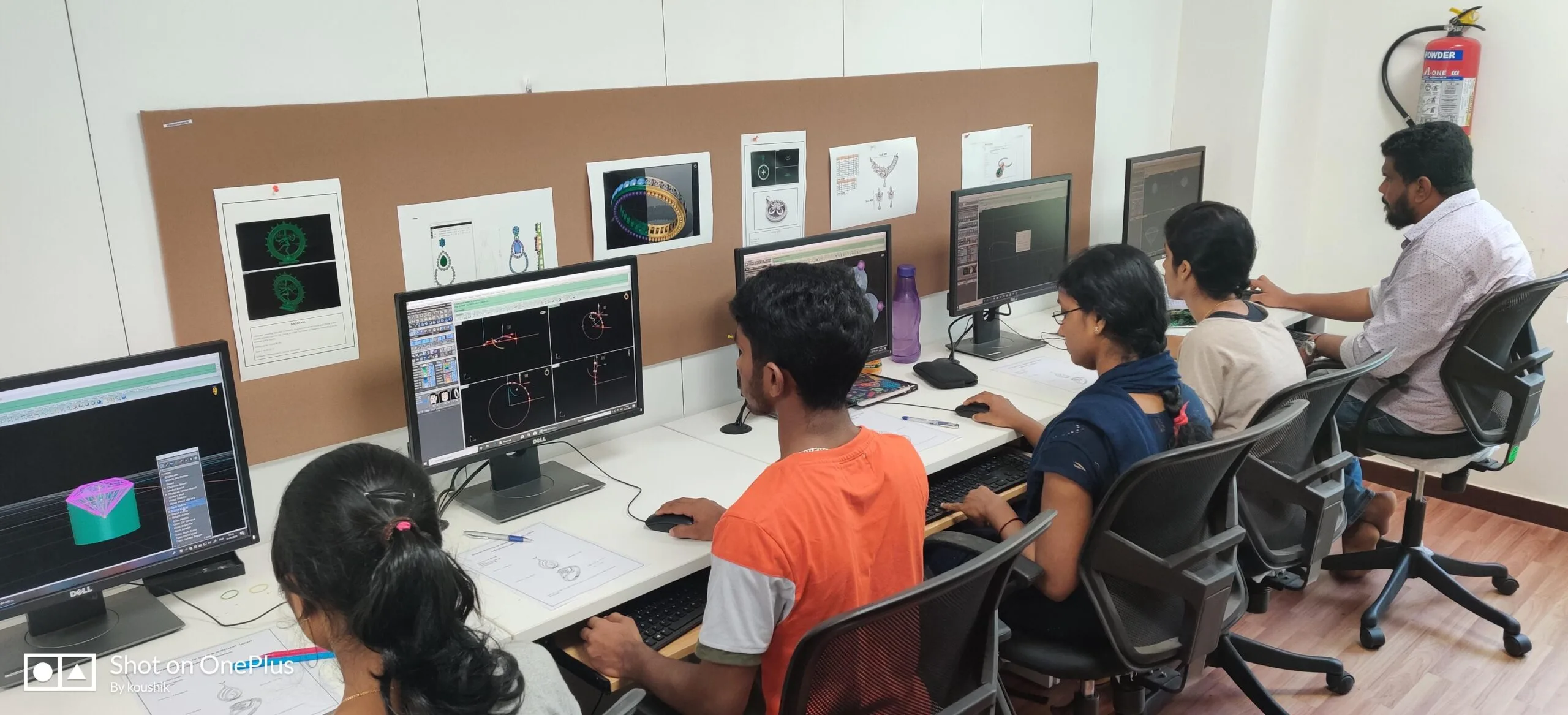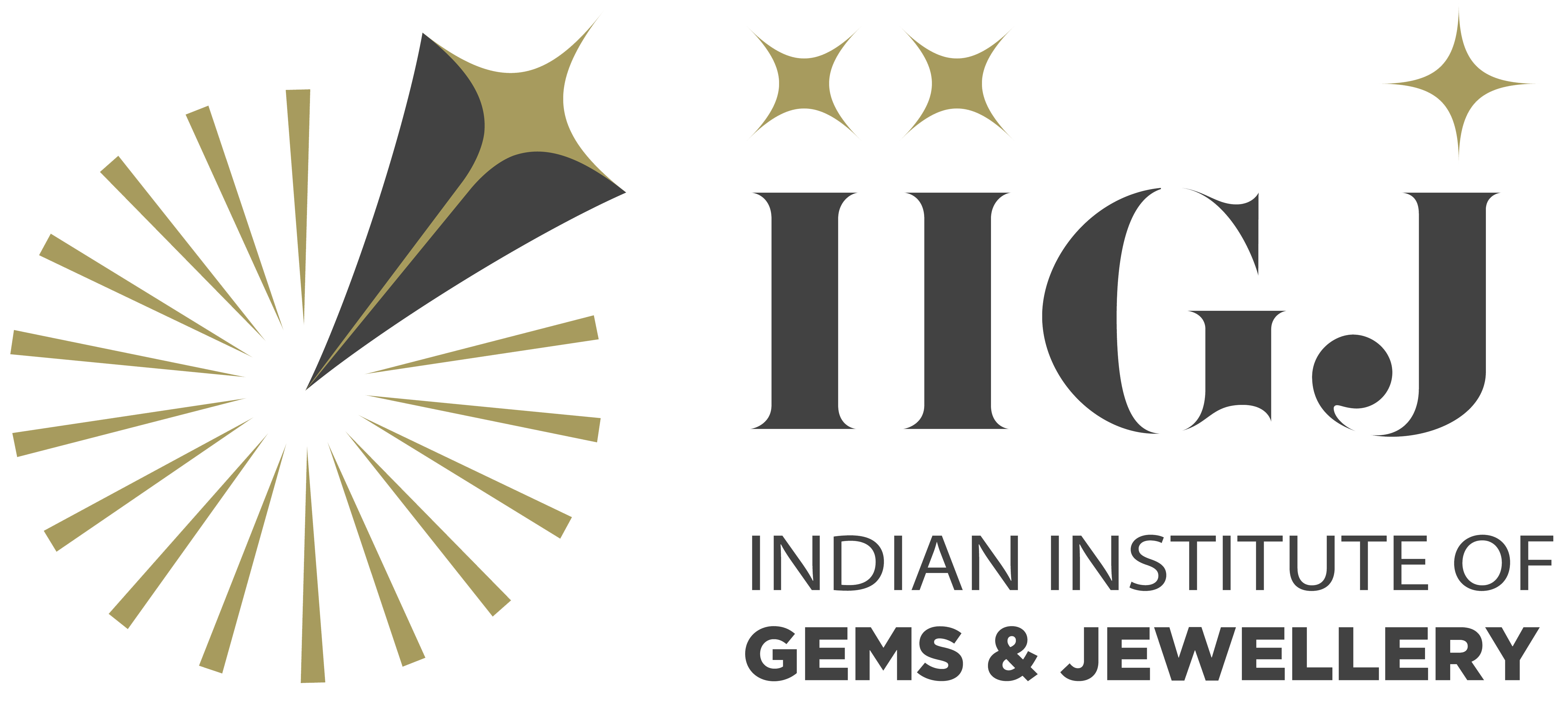HOW DO I GET INSPIRATION FOR JEWELLERY DESIGN?
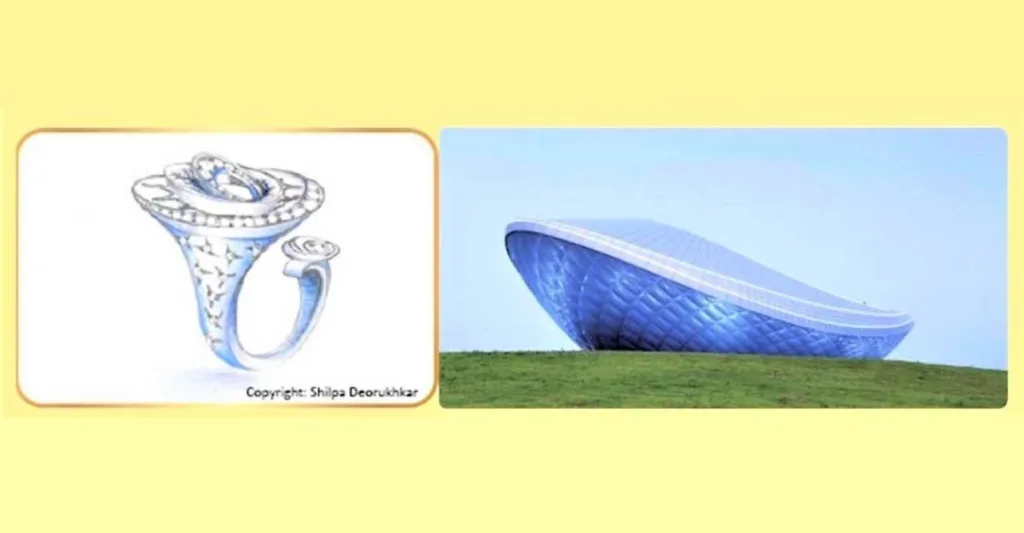
We conducted a small workshop for our Design students to let us know how they get Inspiration for their Jewellery design. We receive overwhelming responses from our students, it is very interesting to see what are the different sources from where these students get inspiration. Below are the responses of few students. Pooja Vishwakarma Look at other designs for inspiration- Obviously, this does not mean copying outright another designer’s jewelry ideas. You don’t have to limit yourself. You’ll find more inspiration by looking at pieces with different themes and concepts, or different types of metals and gemstones. Stay in touch with the latest fashions- We should not limit ourselves to fashion trends in clothing and jewelry. We must take a look at trends in architecture, film, music, and other industries that affect fashion trends as well. Follow jewelry blogs- Reading jewelry blogs for what’s new in jewelry design is another effective way to find inspiration. There are many excellent writers out there who can keep you updated on the latest innovations, design ideas, trends, and fashions. Archana Patel Start sketching- Sometimes, all you need to doto find your creative spark isto just start sketching. Sometimes it’s themixing of ideas when you lookback at your sketches, orsimply using ofideas that have been on yourmind that allows yourcreativity to flow again. Way of life- In India, there are severaltrending inspirations thatcan be transformed into the design of jewellery. Youcan get inspiration fromthe way of life of the people,how they dress, how they make a visualrepresentation of it. For example, an Indian saree with all of its beautiful colors & patterns can be used as an inspiration to be transformed into jewellery. Social media- With the vast trend in Indianmovies, inspiration is being takenfrom these movies, series, cartoons and aretransformed into jewellery sketches.Jewellery showcase inmovies such as Padmavat, Jodha Akbar, Bajirao Mastani amongothers turned out to betrendsetters for the season. Pushpa Devi Inspiration from Nature– A designer can get inspiration from natural resources like birds, trees, shells, and all that God-gifted nature. It can be in the form of a bird feather, a bright flower, the patterns on a butterfly, or the colors of the sky when the sunsets. Exhibitions- A great source of inspiration can also come from exhibitions, be it in art or fashion, books, a visit to the markets, magazines, pictures, catalogs. Jyoti Singh Sketching- Planning any ideas to circulate, pencil or pen is needed. Similarly, for sketching or scribbling, we need the ability to visualize and analyze the concept. So, once the inspiration is achieved, half the work is completed. Workshops- It helps a designer to develop a new skill set. It helps to create new ways of thinking, new skills, new ideas, having fun while learning. Vaishali Upadhyay Designing involves skill, creativity, originality with an ability to visualize ideas Observing, recording and analyzing from things around us. Natural Sources- Nature is an endless ocean of ideas. We can capture the inspirations from an animal on the run, a bird in flight, blooming flowers, butterflies, insects, or fish. Historical Sources- Inspiration can be taken from museums, historical monuments, libraries, sculptures, Vases, calligraphy paintings, and artifacts. All the recent creativity is a blend of ancient with modern ideas. Themes & Concepts- If a designer thinks with an open mind he/she can express a variety of themes from Magazines, catalogs, books, photographs, visits to jewelry stores, exhibitions.
15 Different Cuts and Shapes of Coloured Gemstones
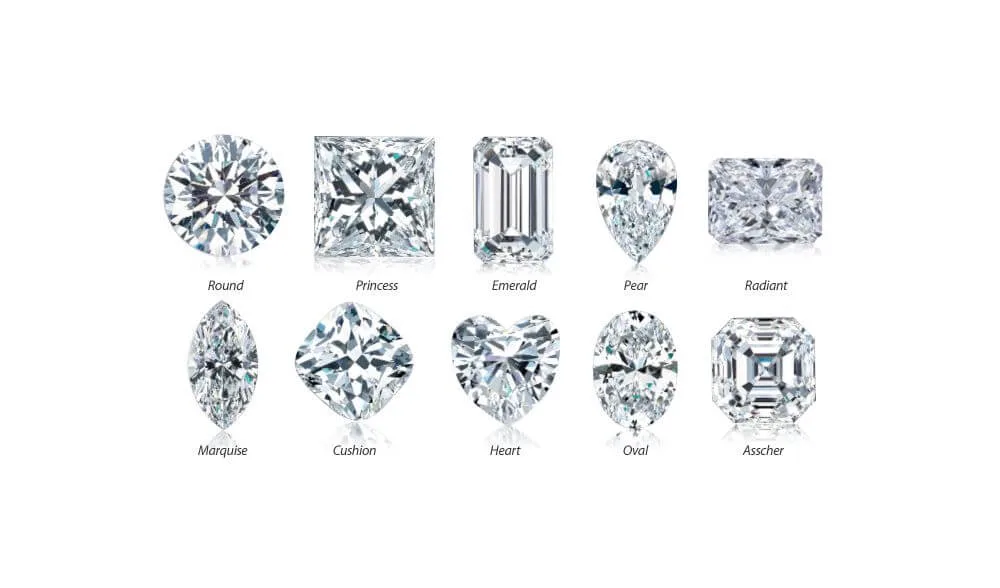
Coloured Stone Cuts and ShapesThe word lapidary (adj.) relates to the work of cutting, grinding, polishing, or engraving precious stones, mostly other than diamonds. It is a process that turns a coloured precious or semi-precious rough stone into a beautifully shaped gem to use in jewellery. A well-cut stone helps to hide imperfections and bring out its true colour and brilliance. Broadly, there are two styles of gem cutting – faceted and non-faceted, or cabochon. While faceted gemstones have geometric shapes and flat polished surfaces, cabochons have rounded surfaces. Today, fancy cuts such as flowers, leaves and stars can also be seen in coloured stones. It is the artistry of the gem cutter or lapidary (n.) that makes each coloured gemstone a piece of art. Here are some of the most common cuts used in gemstones: 1. Cabochon Cut The cabochon, also known as a cab, is the oldest form of shaped and polished gemstone dating back to the 13 or 14th century. The name, derived from the Norman French word “caboche”, meaning head, describes the stone as having a flat bottom with a convex or rounded domed top. The cut helps to display characteristics like asterism (the star effect) in star sapphires and rubies, chatoyancy (Cat’s Eye effect) in tourmalines, Tiger’s Eyes, chrysoberyls, iridescence (changing of colour in some lights or angles) in opals, or adularescence (milky-bluish lustre) in moonstones, rose quartz and agates. While the traditional cabochon was oval in shape, today cabochons are available in rounds, triangles, and rectangles. 2. Buff-Top This cut is a mix of a cabochon and a faceted gem. The top has a cab dome while the bottom contains facets on the pavilion below the girdle. These strategically placed facets allow light to reflect from the pavilion, giving the gemstone an illusion of depth. Bufftops are often found in men’s jewellery. This kind of cut is exactly the opposite of a rose cut. 3. Round Brilliant-Cut The round brilliant-cut gemstone, also known as the Round Cut, American Ideal Cut or American Standard Cut has 57 facets. It was perfected by mathematical genius Marcel Tolkowsky in 1919, calculated with variables such as the index of refraction and covalent bond angles. Today, the best diamond solitaires in the world use this cut. Tolkowsky’s recommended cut height for a Round Brilliant is 58% of the diameter of the diamond, 43% for the pavilion, and 14% for the height of the crown. This ratio provides maximum fire, brilliance and sparkle. This cut is also commonly found in coloured gemstones. 4. Oval Cut The Oval cut has an elliptical shape with 69 facets. Created in the 1950s, it is a hybrid between a round cut and a marquise cut. Often used in coloured stone and diamond engagement rings, the elongated silhouette of the gemstone creates the illusion of a larger gemstone allowing the finger on which it is worn to look longer and slimmer. 5. Baguette Cut Long, oblong and rectangular-shaped Baguette cut gemstones first appeared during the 1920s-30s art deco movement. Crafted in step cuts the 14 facets resemble a pyramid without a top. It has clean lines and a modern, geometric look. Baguette cut stones can be either regular or tapered, resembling a trapezoid. 6. Princess Cut The Princess cut, or Square cut, is the second most popular cut, after the Round Brilliant cut. It is technically known as the Square Modified Brilliant because it is a square version of the Round Brilliant cut. It has between 58 and 76 facets that give it brilliance and sparkle and maximize its lustre. A square-cut gem retains 80% of the rough gemstone. Solitaire engagement rings have princess cut gemstones with trilliants at their sides. 7. Pear Cut A Pear cut gemstone looks like a teardrop. It offers 71 facets that reflect light and allow the colour to showcase dramatically. It is a difficult cut that needs an expert lapidary to align the point with the peak of the rounded end. The gemstone also requires a six-prong setting to maintain support for its fragile point. Pear cut coloured stones have donned jewellery since the 1400s and are a favourite in earrings and pendants even today. 8. Emerald Cut The Emerald cut is like a rectangle from the top, except that it has trimmed or truncated corners. Its 50 facets help to emphasize the gem’s colour and clarity. The cut was originally designed for emeralds. Sinceemeralds occur in nature with numerous inclusions and are softer than other precious stones, cutting them was difficult due to potential chipping. The Emerald cut addressed those issues by decreasing the amount of force applied during cutting to protect the stone from chipping and breakage. 9. Octagon Cut The Rectangular cut or Octagon cut gemstone has 53 facets. This cut is different from the Emerald cut as the steps on the pavilion are not equidistant. In this cut, the four corners are metered and the facets run in steps parallel to the gemstone circumference. It is also a preferred cut in which the deep colour highlights the beauty of the gemstone. 10. Cushion Cut This classic Cushion cut has 64 facets. Also known as the Pillow cut, Old Miner cut, or Old European cut, the Cushion cut was popular in jewellery of the late 19th and early 20th centuries. Like a Princess cut, this cut also reduces the wastage of the rough gem while maintaining its lustre and brilliance. 11. Marquise Cut The Marquise cut, also known as the Navette cut, has 57 facets. This modified brilliant cut has a ratio of length to width 2:1 to help reflect the most amount of light and maximize sparkle and colour. In a Marquise cut, the two endpoints must line up with each other and the two halves of the stone should be perfect copies of each other. The cut offers more weight per carat than any other cut creating an illusion of a larger gemstone. 12. Briolette One of the most difficult shapes to cut,
IIGJ Mumbai Welcomes its 10th Batch of Students of Post Graduate Diploma in Jewellery Management – Different Streams, Same Dream!
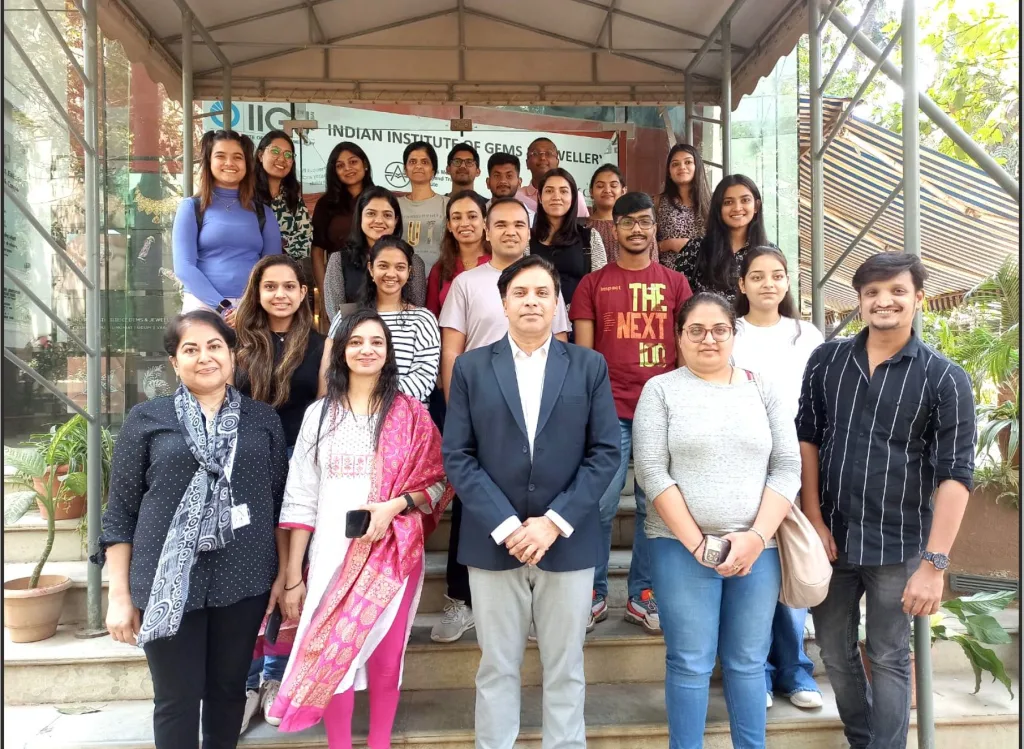
6th April 2023, Mumbai: IIGJ Mumbai welcomed its new batch of 23 students for the Post Graduate Diploma in Jewellery Management programme. They are graduates of different streams but share the same dream – an exciting career in the gem & jewellery industry, in India or abroad. Many will continue to post graduate degrees in different parts of the world, but for now, the focus is to gain as much knowledge as IIGJ has to offer! There is also a good regional mix, as they come from different parts of the country. This is the 10th PGDJM batch since the programme was introduced in 2016. IIGJ is proud to announce that more and more graduates striving for careers in the gem & jewellery industry as employees, entrepreneurs or to manage their family businesses are finding this intensive, power-packed programme at IIGJ Mumbai more than appropriate to give shape to their dreams for the future. Over a period of 1 year these students will learn theory and get hands-on practical training from experienced, industry-trained faculty in manual design, CAD for jewellery, gemmology and diamond grading, manufacturing techniques, merchandising, management principles and in the final module, they will also create designs with mentorship from a jewellery industry partner. The programme thoroughly prepares them for their professional future in the gem & jewellery industry, or for further studies in the field.
IIGJ Delhi Participates in State-Level Career Conclave

28.1.2022, New Delhi: “Career Conclave” was organized by the Delhi Directorate of Education (DoE) from Monday, 28th Jan 2022. The four-day conclave provided a platform to a number of public & private educational institutions, universities (both govt. & semi govt.) along with para military forces. The Career Conclave was Inaugurated by Mr. Manish Sisodia, Deputy CM, Delhi. IIGJ Delhi participated to provide career guidance and showcase career opportunities to Class 12 students at the Conclave.
Revolutionising Gems & Jewellery Education: A Closer Look at IIGJ Mumbai

IIGJ Mumbai graduates celebrating Indian Institute of Gems & Jewellery (IIGJ) Mumbai stands as a centre of excellence in the gems and jewellery industry, providing comprehensive education and training to aspiring professionals. Established in 2003 under the auspices of the Gem & Jewellery Export Promotion Council (GJEPC), IIGJ Mumbai has continually strived to meet the evolving needs of the industry and produce skilled individuals who contribute to its growth. With its state-of-the-art infrastructure, industry-oriented curriculum, and collaborations with leading stakeholders, IIGJ Mumbai has earned a reputation as a premier institution that equips students with the knowledge, skills, and practical experience necessary to thrive in the competitive world of gems and jewellery, Bharat Vaswani, Head of the Institute, tells Solitaire. Please provide an overview of the IIGJ Mumbai and its role in the industry? Indian Institute of Gems & Jewellery (IIGJ) is an initiative of the Gem & Jewellery Export Promotion Council (GJEPC). The Mumbai centre was setup in 2003 and is located in MIDC, near SEEPZ. The institute was created with a vision to provide comprehensive education and training in jewellery design, gemmology, manufacturing, and merchandising. Over the years, IIGJ Mumbai has earned a reputation for its exceptional teaching, state-of-the-art infrastructure and industry-oriented curriculum. The IIGJ Mumbai campus is a testament to the institute’s commitment to providing students with an environment conducive to learning. Equipped with modern CAD laboratories, gemstone library, design studios and manufacturing workshop, students have access to cutting-edge facilities that foster practical learning. These resources allow students to gain hands-on experience in gemstone identification, jewellery manufacturing techniques and the latest design trends. IIGJ Mumbai offers many different courses tailored to meet the demands of the ever-evolving gem and jewellery industry. With an option to choose from short-term certificate courses and comprehensive undergraduate and postgraduate programmes, students have the opportunity to choose a path that is aligned with their interests and career aspirations. The curriculum blends theoretical knowledge with practical training, ensuring that students are well-equipped to enter the industry with confidence. Recognising the importance of industry exposure, IIGJ Mumbai has forged strong ties with leading jewellery houses, gemstone dealers, and manufacturers. The institute regularly organises workshops, seminars and guest lectures by industry experts, enabling students to gain insights into the latest trends, technologies, and market dynamics. Furthermore, IIGJ Mumbai facilitates internships and placements, providing students with invaluable real-world experience, thereby enhancing their employability. With access to modern design software and guidance from experienced faculty, students are empowered to create innovative and exquisite jewellery pieces that reflect their artistic vision and have been consistently well-received by the industry. IIGJ Mumbai focuses on cultivating an entrepreneurial mindset among its students. The institute offers courses and workshops on jewellery entrepreneurship, providing students with the knowledge and skills required to start their own jewellery businesses. With its unwavering commitment to quality education and industry-oriented training, IIGJ Mumbai has played a vital role in shaping the future of the jewellery industry in the past and will continue to do so in future. Two-finger ring by Vaishnavi Divate Earrings by Dev Mudgal What are some of the key initiatives taken by IIGJ Mumbai to produce trained professionals in the gems and jewellery sector? The gems & jewellery sector is a significant contributor to India’s economy, renowned for its rich heritage and craftsmanship. By providing comprehensive education and training programmes, IIGJ Mumbai is empowering individuals to excel in this thriving industry. In order to meet the industry’s growing demands for skilled professionals, the IIGJ Mumbai has undertaken several key initiatives, few of which are: Robust Curriculum and Course Offerings: IIGJ Mumbai has developed a comprehensive and industry-oriented curriculum to equip students with the necessary knowledge and skills. The curriculum is regularly updated to stay aligned with the latest trends, techniques, and technologies used in the industry, ensuring that students receive relevant and up-to-date education. State-of-the-Art Infrastructure and Learning Environment: IIGJ Mumbai provides an environment that is conducive to learning, with modern facilities and infrastructure. The institute has well-equipped classrooms, advanced gemmological laboratories and gemstone identification centre, design studios, computer-aided design (CAD) labs and a manufacturing workshop. This enables students to gain hands-on experience with industry-standard tools, machinery and software thereby enhancing their practical skills and understanding. Industry-Expert Faculty: IIGJ Mumbai boasts of a teaching team of experienced and highly skilled faculty members who are industry experts as well. These faculty members bring in-depth knowledge, industry insights and real-world experience to the classroom, enriching the students’ learning experience. The faculty’s expertise helps bridge the gap between theoretical concepts and practical applications, preparing students for the challenges of the industry. Immersive Industry (Factory/Retail Setups) Visits: The students are exposed to real-life jewellery manufacturing setups to experience and learn industry practices adopted for limited-edition as well as mass produced jewellery. Visits to retail setups help the students understand the importance of the art of storytelling involved in the sale of manufactured jewellery pieces. Internship and Industry Collaborations: Collaborations with reputed jewellery companies helps provide students with industry exposure and practical experience. This also benefits IIGJ Mumbai and industry organisations. The institute facilitates internships, enabling students to work with industry professionals, understand workflow processes and gain hands-on experience. These collaborations also create networking opportunities, enhancing students’ prospects for employment after graduation. Skill Development Workshops and Seminars: IIGJ Mumbai organises regular skill development workshops, seminars and guest lectures featuring renowned experts from the gem and jewellery industry. These events cover a wide range of topics, including gemstone grading, jewellery manufacturing techniques, market trends and business management. Such interactive sessions provide students with valuable insights, foster creativity, and enhance their understanding of the industry’s nuances. Career Placement Assistance: IIGJ Mumbai provides dedicated support for career placement to its students. The institute maintains strong ties with leading jewellery companies and facilitates campus recruitment drives. Additionally, it offers career counselling, resume building workshops, and interview preparation sessions to equip students with the necessary skills to succeed in job interviews and secure employment in reputed organisations. How does IIGJ Mumbai ensure that its training programmes are aligned with the evolving
GJEPC Welcomes new Chairman of the IIGJ MUMBAI Board, Mr. Vasant Mehta

Mr. Vasant Mehta, former Chairman of Gem & Jewellery Export Promotion Council and founder Director and former Chairman of Indian Institute of Gems & Jewellery, Mumbai is elected as Chairman of the Board of IIGJ Mumbai. He has taken charge from Mr. Kirit Bhansali, who served as Chairman from 2016 to 2022. The ceremony at IIGJ, was attended by Mr. Vipul Shah and Mr. Kirit Bhansali to formally welcome the new chairman of IGJ Mumbai. Mr. Mehta addressed IIGJ Mumbai staff, praising the leadership provided by Mr. Bhansali during his tenure and GJEPC’s role in the growth of IIGJ, said “I am happy for the opportunity to serve IIGJ as Chairman of the Board once again. IIGJ has come a long way since it began in 2006 and it will be my continuous endeavour to take the Institute to new heights for it to become a benchmark in gem & jewellery education.” Mr. Mehta is passionate about gem & jewellery education and creating trained professionals for the fast-growing industry, which was GJEPC’s main objective behind creating IIGJ. Mr. Mehta served as GJEPC Chairman from 2008-10, and has brought about immense transformation in the Indian diamond manufacturing industry as a global jewellery manufacturing hub, with a focus on quality and design oriented jewellery. He has also served as Chairman of IIGJ Mumbai (2009 to 2016), Director of the National Skill Development Corporation (NSDC), and Vice President of International Diamond Manufacturers Association (IDMA). He works untiringly to safeguard the interests of diamond manufacturers and spread the message of best practices in the trade. Mr. Mehta is a second-generation diamantaire, and founder-senior partner of M/s. V. Rameshchandra & Co. He has been serving his family business for over 50 years. The GJEPC Chairman Mr. Vipul Shah while addressing the attendees assured of his complete support to Mr. Mehta and IIGJ in their continuous efforts to achieve the set vision of the institute.
The 5Cs of Coloured Gemstones
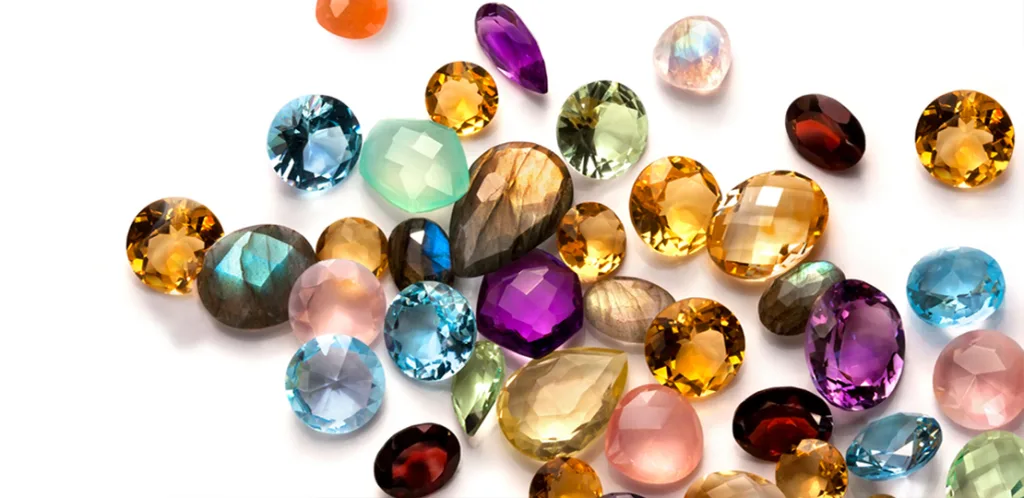
Precious and semi-precious coloured gemstones have graced royal heads to fashionista necklines. They have symbolized status, power, love, and beauty. Coloured gemstones, like diamonds, are also graded by gemmologists based on their characteristics or properties. This basic gemstone grading helps lay the foundation to command special attention and higher pricing for the gemstone. The 5Cs of coloured gemstonesLike diamonds, colour stones also have 5Cs or five characteristics. They are: – 1. ColourColour is the main characteristic of any gemstone. As coloured gemstones are varied and difficult to understand, gemmologists worldwide use standard parameters to grade the colour of the gemstone. Every gemstone colour is evaluated on the basis of three components. These are:- – HueHue is the color reflected by the gemstone and visible to the naked eye. The Gemological Institute of America (GIA) has categorized hues – red (R), orange (O), yellow (Y), green (G), blue (B), violet (V), and purple (P). Almost every primary color of the gemstone falls within one of these hue categories.– ToneTone describes the depth of the color as too light, light, medium, dark, or too dark. The Gemological Institute of America (GIA) assigns a number in the color gem grading code to represent the tone of the gem from light to dark when viewed from the top/table of the gemstone. The value ranges from 0, colorless or white, to 10, black. The tone of the gemstone continues to give it brilliance even when viewed away from direct light.– SaturationSaturation refers to the intensity of the gem’s hue ranging from light to strong and deep to shallow. At GIA, the saturation values range from 1 to 6. Warm hues, such as red, orange, and yellow, become shades of brown as their saturation decreases. Cool hues, like blue and violet, become progressively more gray as their saturation decreases. 2. ClarityClarity is the second most crucial factor when comparing high-quality colored gemstones. It is simply described as – the relative absence of inclusions (materials trapped inside the gem), fractures, and blemishes (surface imperfections) that affect the appearance and structural integrity of a coloured gemstone. Since almost all mined gemstones contain inclusions, it is the size, position, and visibility of the inclusions that impact the overall quality of the stone. GIA has the following clarity grades: –– VVS: very, very small inclusions– VS: very small inclusions– SI1 and SI2: small inclusions– I1, I2, and I3: included– Dcl (déclassé) for cabochons, beads, or carvings.As a general rule, the lesser the inclusions or higher clarity, the better the value of the coloured stone. 3. CutCut plays an important part in determining the value of a faceted gem. The ideal cut enhances the colour, diminishes its inclusions, provides overall symmetry, and/or highlights certain characteristics of the gemstone. There are different cuts in coloured gemstones from round brilliant to hearts, pears, marquise, and more. The main elements that impact these cuts are: –– The outline or symmetry of the stone.– An optimum table.– Alignment of the crown and the pavilion– Shoulders and culet or keel lines.– Girdle thickness and unevenness.It is finally the cut and the polish that determine the overall look and feel of the gemstone. 4. CaratA carat is the standard unit for measuring gem weight. One carat equals 1/5 of a gram or 200 milligrams. As the carat weight corresponds to the density of the gemstone, sometimes two gemstones with the same weight may be very different in size. For example, a one-carat amethyst that has a specific gravity of 2.66 may look bigger than a sapphire with 4.00 specific gravity in the same weight. Thus, buying a coloured gemstone on the basis of carat weight may not make perfect sense. Besides carat weights, coloured gemstones are also set up for millimeter sizes. 5. CostThe price of a colored gemstone may vary from as little as INR 500 per carat to INR 5,00,000 per carat depending upon the gemstones colour, cut, clarity, and carat. But the price is also determined by another factor that is – rarity. Rarity is one of the most decisive factors that determine the cost or pricing of the gemstone. With natural deposits quickly depleting and few mines even closed down it makes the coloured stones from those mines more valuable and sought after. Tanzanites, Burma rubies, Alexandrites, Paraíba Tourmalines, Red Berlyls, and Benitoite are few coloured gems that are difficult to find and very costly too. ConclusionHaving said all of the above, it is equally necessary to know coloured gemstones are often treated to produce intense or light color and/or to improve the overall look and desirability of the gemstone. Emeralds are commonly oiled, sapphires heated, blue topaz and tourmalines irradiated, corals bleached, black onyx dyed, and lapis lazuli impregnated with colorless wax or oil. Thus, before buying a coloured gemstone, consider the treatment and the 5Cs or five characteristics – color, clarity, cut, carat, and cost before investing in the best gemstones for everyday wear or a collectors stone. Visit us at Online Courses to know more.



